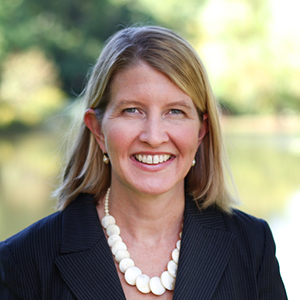Fundraising Misconceptions in 2021


Over the last twelve months, philanthropy has been on a roller coaster ride and we, as fundraising professionals, have done our best to hold on. Many of us closed our eyes in fear and are still waiting passively for the ride to end. But others braced for change, embraced new realities, and have emerged with strong giving from engaged donors.
There’s little doubt that the philanthropic landscape has changed this past year. Some changes will be permanent, while others will disappear with the pandemic. After reading the Dorothy A. Johnson Center for Philanthropy’s 11 Trends in Philanthropy for 2021 report, we reflected on some of the trends we’re seeing in our work with nonprofits, universities, hospital foundations, and independent schools.
Below is a list of the major misconceptions we have encountered since last March. For the good of philanthropy — and the communities our nonprofits serve — it’s important to recognize these common misconceptions and work to overcome them.
This is simply not true.
Many of the nonprofits we work with have seen giving in 2020 that is higher than any other year in their history. Still more have seen transformational major gifts that will impact their organization for years to come.
AFP’s Fundraising Effectiveness Project (2020), which tracks quarterly giving in America, found a 10.6% increase in overall giving in 2020 over 2019. The amount raised on GivingTuesday — December 1, 2020 — was 25% higher than in 2019.
Donors are even outpacing the expectations of professional fundraisers. Last April, according to an article in the Chronicle of Philanthropy, only 22% of higher education fundraisers were expected to meet their 2020 benchmarks (Haynes, 2021). By September, the percentage had climbed to 40% and today, 66% of chief advancement officers and vice presidents expect their university to meet their 2021 fundraising goals (Haynes, 2021).
Fundraising gains seem counterintuitive during a pandemic, but not when you consider that donors are problem solvers at heart. Major donors have stepped forward generously to give to the causes they value — and to those nonprofits that kept them informed.
“Fundraising gains seem counterintuitive during a pandemic, but not when you consider that donors are problem solvers at heart.”
Unfortunately, too many nonprofits hunkered down during the pandemic, not wanting to intrude on donors. They opted for silence instead of meaningful updates on how they were serving their constituents during the pandemic. For these nonprofits, the time is now to start rebuilding lost relationships.
Any new president brings uncertainty to the financial markets. Will tax policy shift under a new administration? Will interest rates rise? Some experts have suggested that giving will decline based on this ambiguity. We predict the opposite.
Narrow margins in both the House of Representatives and Senate will temper any proposed aggressive tax legislation. And COVID relief packages will continue to stimulate giving, much like the CARES Act that increased the charitable cash contribution limit from 60% of adjustable gross income (AGI) to 100% for taxpayers who itemize (IRS, n.d.). And like the CARES Act, we expect these incentives to be valid only for contributions made directly to 501(c)(3) organizations, not to donor-advised funds.
In addition, stock market gains over the past few years have left many donors with highly appreciated stock. These donors, while altruistic, are also practical. Rather than pay significant capital gains taxes, donors are motivated to give the stock to a 501(c)(3) organization in return for a deduction and a donation worth the appreciated value of the stock.
One of the surprises we have noticed since the start of the pandemic is a demonstrated interest in sustainable funding. Yes, sustainability has been a buzzword for nonprofits for years, but we are finally noticing more than lip service.
In the campaign planning studies we have conducted over the past six months, donors are showing an increased interest in taking care of facilities — not just building them. They are interested in funding endowments for maintenance, staff, and scholarships. This is a refreshing trend that, if it holds, will continue to yield fruit and hold organizations in good stead far into the future.
Perhaps the most troubling trend in philanthropy today is the shrinking donor pool.
The Johnson Center’s 11 Trends in Philanthropy for 2021 highlighted this challenge. “Megadonors — ultrahigh-net worth individuals and families who have amassed tremendous wealth — are making jaw-droppingly large contributions” (Behrens & Layton, 2021). Total individual giving in the U.S. was $279 billion in 2016, up from $174 billion in 2000, but the percentage of households reporting having made a donation fell to 54%, down from 66% in 2000 (Rooney, 2019).
The latest Giving USA report (2020) shows that in 2019, “giving by individuals achieved the second-highest total dollar amount on record, adjusted for inflation,” it dipped below “70% of total giving for only the second time ever” (para. 9). In 2004, 76% of all gifts came from living individuals (Giving USA, 2020). Some of the decline can be attributed to mega-donors who have shifted their giving away from direct gifts to charities in favor of giving through their family foundations.
Fortunately, the main causes of a shrinking donor pool can be reversed. But it will take real commitment on us as philanthropy professionals to undo bad habits that prioritize the new over the steady. We must address our abysmal donor retention practices that resulted in a 59.6% repeat donor retention rate (Fundraising Effectiveness Project, 2021). Even worse, only roughly 20% of new donors in 2019 gave a second gift to the same charity last year (Fundraising Effectiveness Project, 2021). We must help educate our boards on the importance of cultivation and donor stewardship over the desire to acquire new donors.
“[T]he main causes of a shrinking donor pool can be reversed. But it will take real commitment on us as philanthropy professionals to undo bad habits that prioritize the new over the steady.”
If we fail to expand the pool of donors across all generations, it will be much harder to achieve the large capital projects and visionary transformations that require major and campaign giving. Taking care of the donors we have — while at the same time acquiring new ones — is critical. Focusing on a solid moves management program and an emphasis on turning one-time donors into monthly or quarterly recurring donors is a start.
Donor-advised funds are not ideal, but they are here to stay.
In 2015, there were 272,781 DAF accounts in the United States. Four years later, that number had ballooned to 873,228 (National Philanthropic Trust, 2021). Their popularity will only increase as wealth advisors continue to promote their many benefits to investors.
Instead of running from DAFs, let’s look at them as an opportunity to bring in new philanthropy. In their 2020 DAF Report, the National Philanthropic Trust states that, “DAF donors are consistently generous” (2021, p. 1). They note that the DAF payout rate is above 20% for every year on record; their data shows DAF grantmaking rose 66% in early 2020 over early 2019 in response to the pandemic (NPT, 2021).
DAFs are no longer just for wealthy donors. The average DAF account size is $162,556; this total is expected to keep declining as the total number of DAF accounts grows (NPT, 2021). As 11 Trends in Philanthropy for 2021 highlights, “DAFs and online giving platforms have led to a broader array of giving mechanisms for individual donors of all levels of wealth. For nonprofits, this leads to a need for increasingly sophisticated fundraising strategies that incorporate social media savvy, technological sophistication, and extensive donor cultivation work” (Behrens & Layton, 2021).
There is little doubt that 2021 will be a complex year for philanthropy. But there is also tremendous opportunity for nonprofits that recognize donors want to be part of the recovery. And for nonprofits that put their capital campaigns on hold, now is an ideal time to restart the conversation. Donors with pandemic fatigue are looking to the future. Today’s philanthropic landscape makes it ideal for sharing your vision — and your plan to achieve it — with donors.
Now is also the time to focus on the tried-and-true fundamentals of fundraising — building relationships, treating your donors as investors, being transparent, and sharing meaningful impacts. Give your donors an opportunity to be part of your future.

Behrens, T., & Layton, M. (2021). Dynamic and disruptive forces are increasingly at work. 11 trends in philanthropy for 2021. Dorothy A. Johnson Center for Philanthropy. https://johnsoncenter.org/blog/dynamic-and-disruptive-forces-are-increasingly-at-work/
Fundraising Effectiveness Project. (2020, December 22). Quarterly Fundraising Report: Year-to-date nonprofit sector trends 01/01/2020-09/30/2020. AFP Foundation for Philanthropy. https://afpglobal.org/fepreports
GivingTuesday. (2020, December 2). After Year of Global Crisis, Millions Respond with Massive Swell of Generosity and Shared Humanity on GivingTuesday 2020. https://hq.givingtuesday.org/after-year-of-global-crisis-millions-respond-with-massive-swell-of-generosity-and-shared-humanity-on-givingtuesday-2020/
Giving USA. (2020, June 16). Giving USA 2020: Charitable giving showed solid growth, climbing to $449.64 billion in 2019, one of the highest years for giving on record. https://givingusa.org/giving-usa-2020-charitable-giving-showed-solid-growth-climbing-to-449-64-billion-in-2019-one-of-the-highest-years-for-giving-on-record/
Haynes, E. (2021, February 23). College fundraisers’ confidence continues to be on the upswing. The Chronicle of Philanthropy. https://www.philanthropy.com/article/college-fundraisers-confidence-continues-to-be-on-the-upswing
IRS. (n.d.). Charitable contribution deductions. https://www.irs.gov/charities-non-profits/charitable-organizations/charitable-contribution-deductions
National Philanthropic Trust. (2021). 2020 Donor-advised fund report. https://www.nptrust.org/wp-content/uploads/2021/02/2020-Donor-Advised-Fund-Report-NPT.pdf
Rooney, P. (2019, December 4). Where have all the donors gone? The continued decline of the small donor and the growth of megadonors. Nonprofit Quarterly. https://nonprofitquarterly.org/where-have-all-the-donors-gone-the-continued-decline-of-the-small-donor-and-the-growth-of-megadonors/